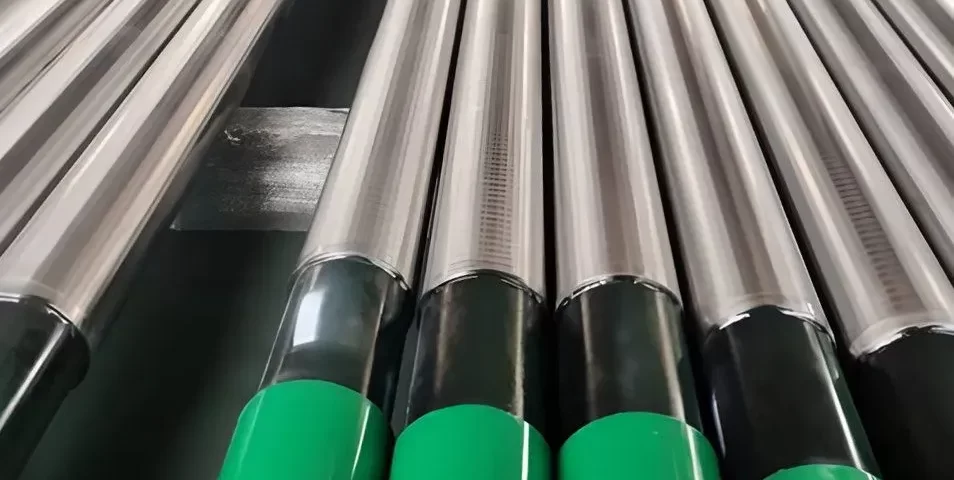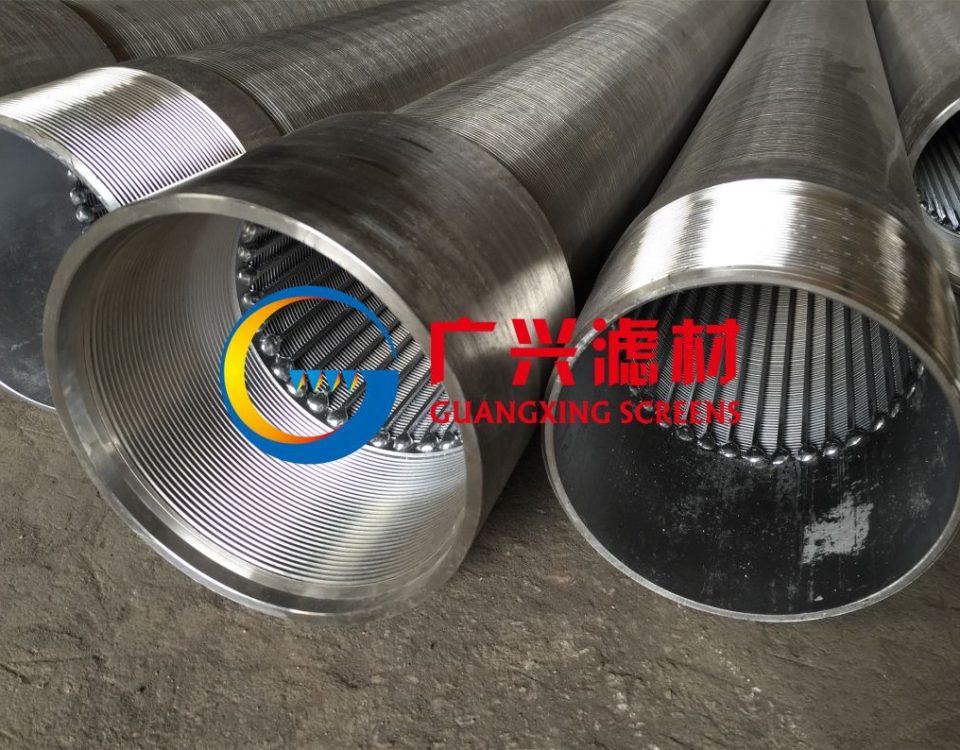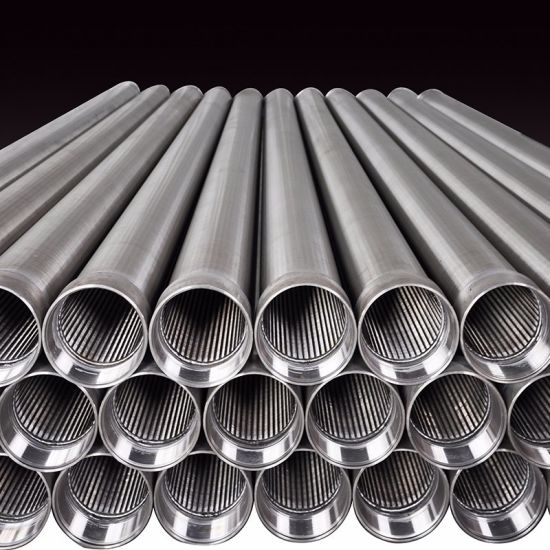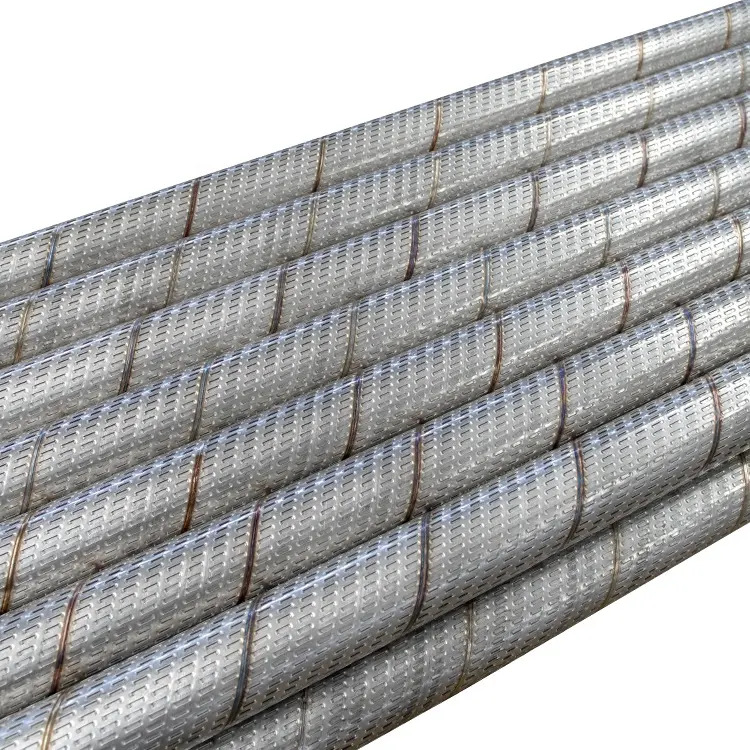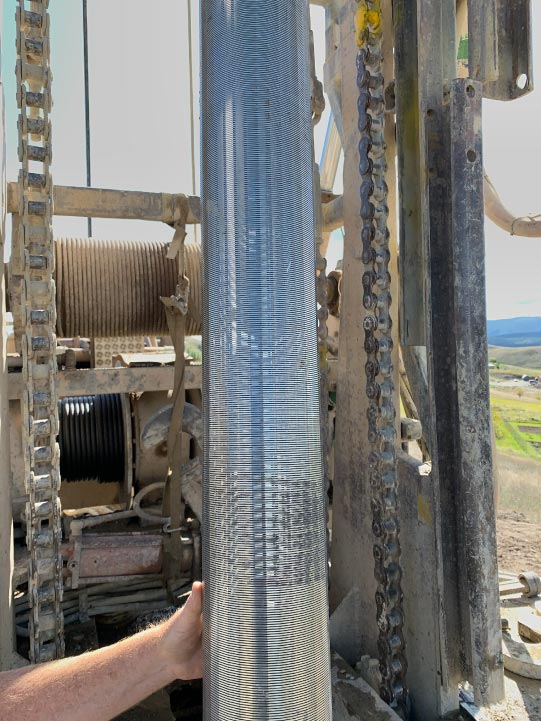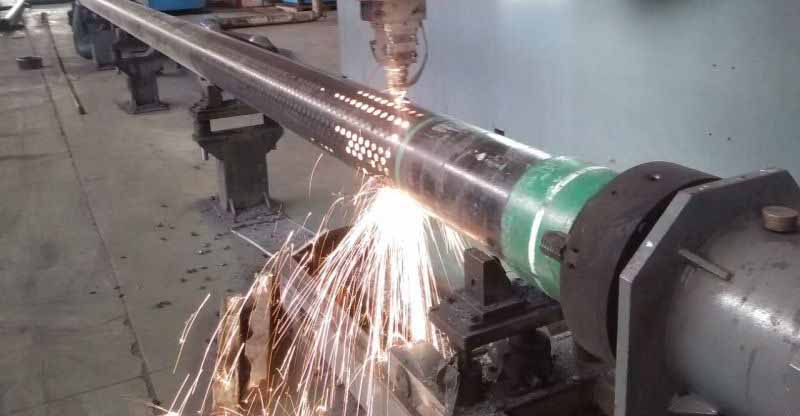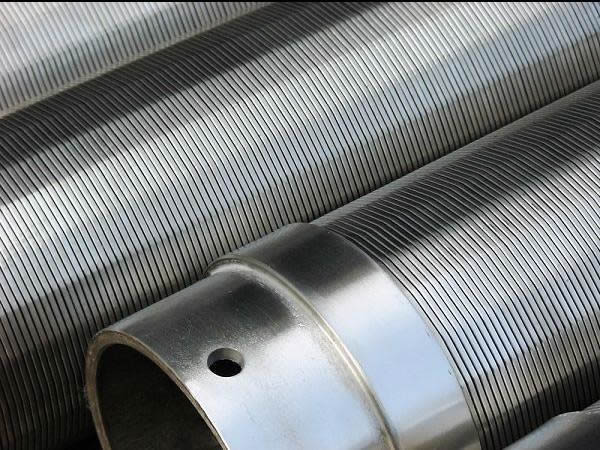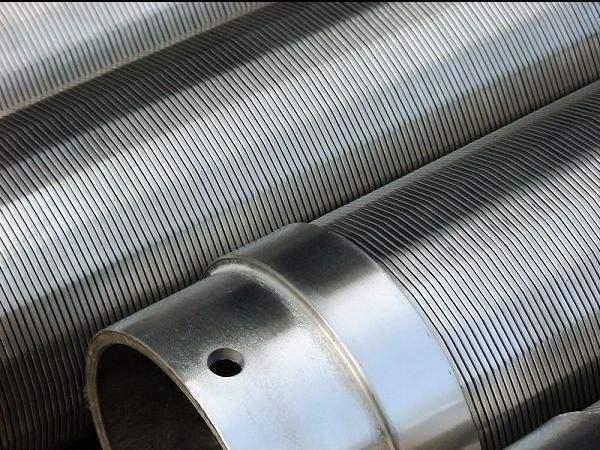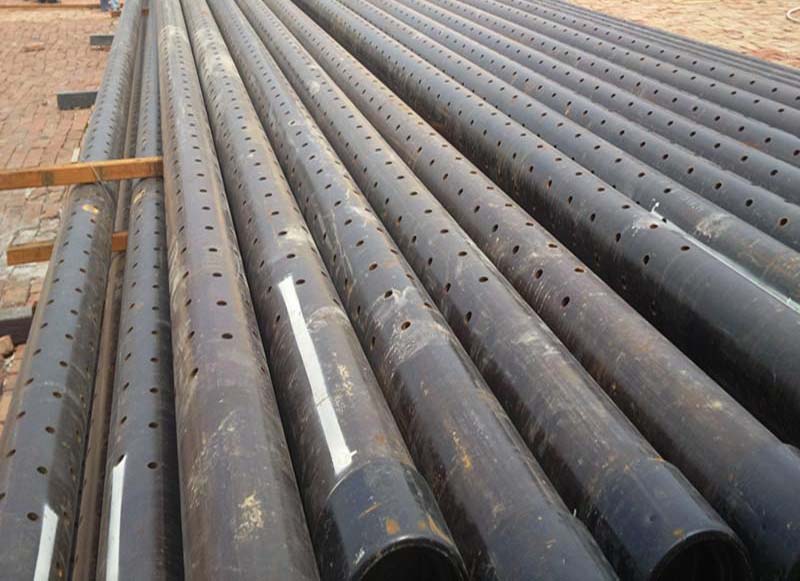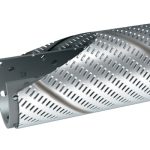Design and Research of Stainless Steel Multi-Layer Cyclic Well Filter Pipe
1. Introduction
The stainless steel multi-layer cyclic well filter pipe represents a groundbreaking advancement in groundwater extraction technology. Designed to address the challenges of sand infiltration, corrosion, and clogging in water wells, this innovative filtration system combines the durability of stainless steel with a multi-layer structure to enhance performance and longevity. As global demand for clean water continues to rise, efficient and sustainable well filtration systems are becoming increasingly critical. This research explores the design principles, technical parameters, comparative advantages, and future potential of the stainless steel multi-layer cyclic well filter pipe, offering a comprehensive analysis of its role in modern hydrogeology.
Traditional well filter pipes, such as single-layer perforated pipes or bridge-slot designs, often struggle with issues like poor sand control, limited durability, and susceptibility to corrosion in harsh environments. The multi-layer cyclic filter pipe overcomes these limitations by incorporating a sophisticated layered structure that facilitates cyclic filtration—a process where water flow alternates through different layers, reducing clogging and enhancing sand retention. This study delves into the engineering behind this design, evaluates its performance against conventional alternatives, and outlines pathways for its future development.
The following sections provide a detailed breakdown of the design parameters, a comparative analysis with traditional filter pipes, and an exploration of future research directions. By examining both the technical and practical aspects of this technology, this research aims to contribute to the broader field of water resource management and well engineering.
| Base Pipe | Screen Jacket | |||||||||
| Nominal Diameter (in) |
Outside Diameter (mm) |
Weight(lb/ft) Wall Thickness (mm) |
Hole Diameter (in) |
Hole Density |
Hole Area (In2/ft) |
OD of Screen Jacket (in) |
Open Area(In2/ft) Slot(in) | |||
| 0.008″ | 0.012″ | 0.015″ | 0.020″ | |||||||
| 2-3/8 | 60 | 4.6(4.83) | 3/8 | 96 | 10.60 | 2.86 | 12.68 | 17.96 | 21.56 | 26.95 |
| 2-7/8 | 73 | 6.4(5.51) | 3/8 | 108 | 11.93 | 3.38 | 14.99 | 21.23 | 25.48 | 31.85 |
| 3-1/2 | 88.9 | 9.2(6.45) | 1/2 | 108 | 21.21 | 4.06 | 18.00 | 25.50 | 30.61 | 38.26 |
| 4 | 101.6 | 9.5(5.74) | 1/2 | 120 | 23.56 | 4.55 | 20.18 | 28.58 | 34.30 | 42.88 |
| 4-1/2 | 114.3 | 11.6(6.35) | 1/2 | 144 | 28.27 | 5.08 | 15.63 | 22.53 | 27.35 | 34.82 |
| 5 | 127 | 13(6.43) | 1/2 | 156 | 30.63 | 5.62 | 17.29 | 24.92 | 30.26 | 38.52 |
| 5-1/2 | 139.7 | 15.5(6.99) | 1/2 | 168 | 32.99 | 6.08 | 18.71 | 26.96 | 32.74 | 41.67 |
| 6-5/8 | 168.3 | 24(8.94) | 1/2 | 180 | 35.34 | 7.12 | 21.91 | 31.57 | 38.34 | 48.80 |
| 7 | 177.8 | 23(8.05) | 5/8 | 136 | 42.16 | 7.58 | 23.32 | 33.61 | 40.82 | 51.95 |
| 7-5/8 | 194 | 26.4(8.33) | 5/8 | 148 | 45.88 | 8.20 | 25.23 | 36.36 | 44.16 | 56.20 |
| 8-5/8 | 219 | 32(8.94) | 5/8 | 168 | 51.08 | 9.24 | 28.43 | 40.98 | 49.76 | 63.33 |
| 9-5/8 | 244.5 | 36(8.94) | 5/8 | 188 | 58.28 | 10.18 | 31.32 | 45.15 | 54.82 | 69.77 |
| 10-3/4 | 273 | 45.5(10.16) | 5/8 | 209 | 64.79 | 11.36 | 34.95 | 50.38 | 61.18 | 77.86 |
| 13-3/8 | 339.7 | 54.5(9.65) | 5/8 | 260 | 80.60 | 14.04 | 37.80 | 54.93 | 66.87 | |
1.Material: Base pipe, K55, J55, N80,etc, Screen jacket: stainless steel (304,304L,316,316L etc.)
2.Diameter: from 1inch-10inch or customized.
3.Slot Size (mm): as per customers’ requirement
4.Unit length:1.5-5.8m fit for the containe
2. Design Parameters
The design of the stainless steel multi-layer cyclic well filter pipe is guided by a set of precise parameters tailored to optimize filtration efficiency, structural integrity, and adaptability to diverse geological conditions. Below is an in-depth exploration of these parameters, which form the foundation of the system’s performance.
2.1 Material Selection
The primary material used in the filter pipe is stainless steel, typically grades 304 or 316L. These alloys are chosen for their exceptional corrosion resistance, particularly in environments with high salinity or chemical exposure. Stainless steel 304 offers a cost-effective option with good resistance to oxidation, while 316L, with its added molybdenum content, provides superior resistance to pitting and crevice corrosion, making it ideal for aggressive groundwater conditions. The choice of material ensures a lifespan of 20-30 years, far exceeding that of carbon steel or PVC alternatives.
2.2 Pipe Dimensions
The filter pipe’s dimensions are customizable to suit specific well requirements. The outer diameter typically ranges from 50 mm to 300 mm, accommodating both shallow domestic wells and deep industrial ones. Wall thickness varies between 3 mm and 12 mm, depending on the depth of the well and the external pressure it must withstand. For example, a shallow well (less than 50 meters) may use a 3 mm thick pipe, while a deep well (over 200 meters) may require a 10-12 mm thickness to resist collapse under hydrostatic pressure.
2.3 Slot Size and Open Area
Slot size is a critical parameter in determining the filter pipe’s ability to control sand infiltration while maintaining adequate water inflow. Slots typically range from 0.1 mm to 3 mm, selected based on the grain size distribution of the aquifer. For fine sand aquifers (grain size < 0.5 mm), a slot size of 0.1-0.5 mm is preferred, while coarser aquifers (grain size > 1 mm) may use 1-3 mm slots. The open area ratio, which dictates the percentage of the pipe surface available for water entry, ranges from 20% to 40%. A higher open area increases flow rate but may compromise structural integrity, requiring a careful balance in design.
2.4 Multi-Layer Configuration
The defining feature of this filter pipe is its multi-layer structure, typically consisting of 2 to 5 layers of stainless steel mesh or perforated sheets. Each layer has a distinct porosity, with the outer layer featuring larger slots (e.g., 1-3 mm) and inner layers progressively finer (down to 0.1 mm). This configuration enables cyclic filtration, where water passes through coarser layers first, filtering larger particles, and then through finer layers for smaller sediments. The cyclic mechanism involves periodic backwashing or flow reversal, dislodging trapped particles and preventing clogging.
2.5 Length and Joint Design
Each segment of the filter pipe is manufactured in lengths of 1 m to 6 m, allowing for modular assembly during installation. Joints are typically threaded or welded, with a preference for welded connections in high-pressure environments to ensure a seamless seal. The modular design facilitates transportation and installation while accommodating wells of varying depths.
2.6 Additional Parameters
Other parameters include tensile strength (typically 500-700 MPa for stainless steel), hydraulic conductivity (adjusted via slot size and open area), and thermal resistance (up to 300°C for certain applications). These factors ensure the filter pipe can withstand mechanical stresses, maintain flow efficiency, and operate in extreme conditions, such as geothermal wells.
3. Comparative Analysis
To evaluate the performance of the stainless steel multi-layer cyclic well filter pipe, it is compared with two traditional designs: the single-layer perforated pipe and the bridge-type filter pipe. The table below summarizes key differences across multiple metrics, followed by a detailed discussion.
| Parameter | Stainless Steel Multi-Layer | Single-Layer Perforated | Bridge-Type |
|---|---|---|---|
| Material | Stainless Steel (304/316L) | Carbon Steel or PVC | Stainless Steel or PVC |
| Corrosion Resistance | Excellent | Poor to Moderate | Moderate to Good |
| Filtration Layers | 2-5 Layers | 1 Layer | 1 Layer with Bridge Slots |
| Sand Control Efficiency | High (90-95%) | Low (50-70%) | Moderate (70-85%) |
| Durability (Years) | 20-30 | 5-10 | 10-15 |
| Cost (USD/m) | 50-100 | 10-30 | 20-50 |
| Flow Rate (L/min) | 500-2000 | 300-1000 | 400-1500 |
| Clogging Resistance | High (Cyclic Cleaning) | Low | Moderate |
3.1 Material and Corrosion Resistance
The stainless steel multi-layer pipe’s use of 304 or 316L stainless steel gives it a significant edge in corrosion resistance compared to the carbon steel or PVC used in single-layer perforated pipes. Carbon steel corrodes rapidly in saline or acidic groundwater, reducing its lifespan to 5-10 years, while PVC, though corrosion-resistant, lacks the mechanical strength for deep wells. Bridge-type pipes, often made of stainless steel or PVC, offer moderate corrosion resistance but do not match the longevity of the multi-layer design due to their single-layer construction.
3.2 Sand Control and Filtration Efficiency
Sand control is a primary concern in well filtration, as excessive sand infiltration can damage pumps and reduce water quality. The multi-layer design achieves a sand control efficiency of 90-95%, thanks to its graded filtration layers. In contrast, single-layer perforated pipes, with uniform slot sizes, struggle to retain fine particles, resulting in efficiencies of 50-70%. Bridge-type pipes, with their unique slot geometry, perform better (70-85%) but lack the layered complexity to handle diverse sediment sizes effectively.
3.3 Durability and Cost
Durability is closely tied to material choice and design. The multi-layer pipe’s stainless steel construction and robust layering ensure a lifespan of 20-30 years, doubling or tripling that of single-layer (5-10 years) and bridge-type (10-15 years) alternatives. However, this durability comes at a higher cost, with prices ranging from $50-100 per meter compared to $10-30 for perforated pipes and $20-50 for bridge-type pipes. The initial investment is offset by reduced maintenance and replacement costs over time.
3.4 Flow Rate and Clogging Resistance
Flow rate is a measure of the filter pipe’s capacity to deliver water. The multi-layer design supports 500-2000 L/min, surpassing the 300-1000 L/min of perforated pipes and 400-1500 L/min of bridge-type pipes, due to its optimized open area and cyclic cleaning mechanism. Clogging resistance is a standout feature, as the cyclic filtration process dislodges trapped particles, unlike the static designs of traditional pipes, which are prone to sediment buildup.
3.5 Overall Assessment
The stainless steel multi-layer cyclic well filter pipe excels in durability, sand control, and clogging resistance, making it ideal for long-term, high-performance applications. However, its higher cost may deter adoption in low-budget projects, where cheaper perforated pipes remain prevalent despite their shortcomings. Bridge-type pipes offer a middle ground but lack the advanced filtration capabilities of the multi-layer design.
4. Future Exploration and Development
The stainless steel multi-layer cyclic well filter pipe holds immense potential for further improvement and widespread adoption. This section outlines key areas for future research and development, addressing technical, economic, and environmental considerations.
4.1 Material Innovation
Future advancements in material science could enhance the filter pipe’s performance and affordability. Research into alternative alloys, such as duplex stainless steels (e.g., 2205), could offer a balance of corrosion resistance and cost-effectiveness. Additionally, applying nanotechnology-based coatings—such as titanium dioxide or graphene—could further improve resistance to corrosion and biofouling, extending the pipe’s lifespan beyond 30 years. These innovations would require rigorous testing in diverse groundwater conditions to validate their efficacy.
4.2 Smart Technology Integration
Integrating smart technology into the filter pipe design could revolutionize well management. Embedding sensors to monitor water flow, pressure, and sediment accumulation in real-time would enable predictive maintenance, alerting operators to potential clogging or structural issues before they escalate. Wireless communication systems could transmit data to a central hub, allowing remote oversight of well performance. Such advancements would increase operational efficiency and reduce downtime, particularly in large-scale industrial wells.
4.3 Design Optimization
Optimizing the multi-layer configuration is a promising avenue for research. Computational fluid dynamics (CFD) simulations could refine slot sizes, layer porosity, and spacing to maximize flow rates while minimizing pressure drop and sediment penetration. For instance, experimenting with variable slot patterns (e.g., spiral or staggered designs) could enhance cyclic filtration efficiency. These optimizations would require field trials to ensure scalability across different aquifer types, from fine sands to coarse gravels.
4.4 Sustainability and Recycling
Sustainability is a growing priority in engineering, and the filter pipe’s stainless steel construction offers opportunities for eco-friendly development. Research into recycling processes could enable the reuse of decommissioned pipes, reducing raw material demand and waste. Additionally, exploring lightweight stainless steel variants could lower the carbon footprint of manufacturing and transportation. Life cycle assessments (LCAs) would be essential to quantify the environmental impact and guide sustainable design choices.
4.5 Scalability and Market Expansion
To broaden its applicability, the filter pipe design could be adapted for both small-scale and large-scale use. For rural communities, a simplified, lower-cost version with 2-3 layers could be developed, maintaining core benefits while reducing production costs. Conversely, for industrial or municipal wells, enhanced versions with additional layers and smart features could meet high-demand requirements. Market expansion into regions with critical water scarcity, such as arid parts of Africa or the Middle East, could drive global adoption.
4.6 Cost Reduction Strategies
Addressing the high initial cost is crucial for widespread use. Future efforts could focus on streamlining manufacturing processes, such as automated laser cutting for slots or modular assembly techniques, to lower production expenses. Partnerships with governments or NGOs could also subsidize costs for developing regions, making the technology accessible where it is most needed. Cost-benefit analyses comparing long-term savings to upfront investment would support these initiatives.
5. Conclusion
The stainless steel multi-layer cyclic well filter pipe represents a significant leap forward in well filtration technology, offering unmatched durability, sand control, and clogging resistance compared to traditional designs. Its design parameters—ranging from material selection to multi-layer configuration—are meticulously engineered to address the challenges of groundwater extraction in diverse environments. While its higher cost poses a barrier to universal adoption, the long-term benefits of reduced maintenance and extended lifespan make it a compelling choice for sustainable water management.
Comparative analysis highlights its superiority over single-layer perforated and bridge-type pipes, particularly in harsh conditions where corrosion and sediment infiltration are prevalent. Looking ahead, advancements in materials, smart technology, and design optimization promise to further elevate its performance and affordability. As water scarcity intensifies globally, the stainless steel multi-layer cyclic well filter pipe could play a pivotal role in ensuring reliable access to clean groundwater, bridging the gap between engineering innovation and environmental stewardship.

